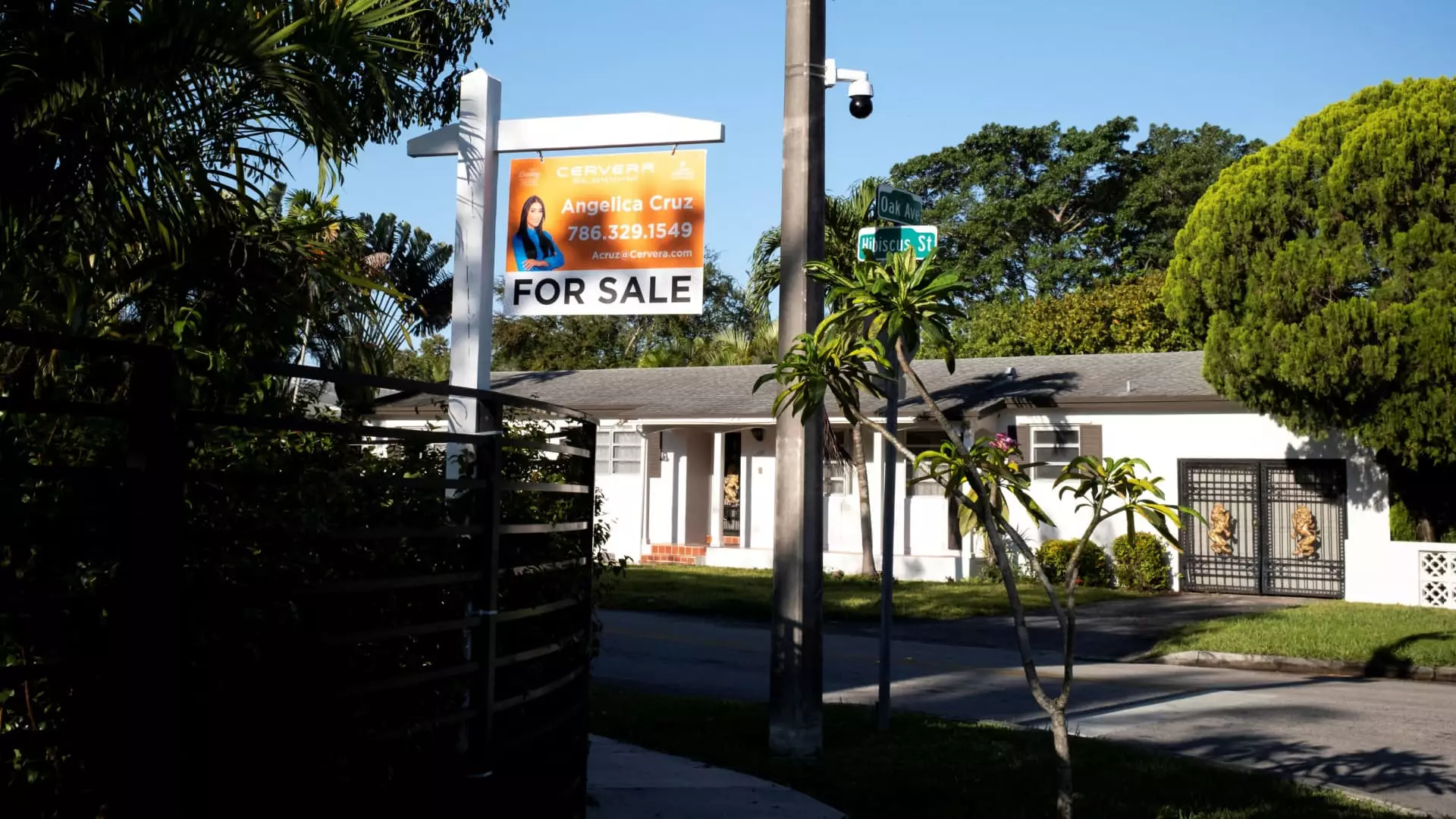As we step into the spring of 2024, the housing market is revealing itself not as a vibrant arena of opportunity but as a stark landscape fraught with uncertainty. A recent report by the National Association of Realtors indicates that home sales have plummeted significantly, with a 5.9% decrease in March alone, marking the slowest pace for this month since the financial crisis of 2009. This decline isn’t just a minor fluctuation; it’s emblematic of deeper structural issues that threaten to implode the very foundation of the housing market.
Traditionally, spring serves as a thrilling wake-up call for buyers and sellers alike, rejuvenating the market with a sense of possibility. However, in a context where mortgage rates are higher than they have been in years—hovering above 7%—the springtime optimism is crushed under the weight of economic pressures. A mere 4.02 million units sold on an annualized basis is not just disappointing; it screams alarm bells about affordability and access in the housing sector.
Regional Disparities: A Tale of Two Markets
Interestingly, the regional breakdown reveals a complex tapestry where the West appears as a paradox. Not only did sales plunge by over 9% in this traditionally high-priced region, but it also paradoxically recorded year-over-year gains, thanks to robust job growth in states like Colorado. This division illustrates that while some areas may seem resilient, the overarching sentiment of malaise grips the broader market.
The contrasting performance across regions highlights an unsettling truth: the housing market is becoming increasingly stratified. Wealthier regions may experience transient strength, but this does not translate into a healthier overall market. As economic mobility stalls—echoing Lawrence Yun’s warning—this division can lead to communities that mirror wealth inequality and social separation, undermining the very fabric of society.
The Challenges of Affordability and Inventory
Even as available listings increased by nearly 20% compared to last year, the willingness or ability of buyers to act remains critically low. With 1.33 million units on the market, one would expect a more vibrant sales environment. However, at a 4-month supply, we are still far from the balanced market target of 6 months. This discrepancy reflects a pervasive lack of confidence among potential buyers who find themselves grappling with soaring mortgage rates and stagnant wages.
It is disheartening to see that first-time buyers—who typically invigorate the market—accounted for only 32% of sales this March, significantly below their historical average of 40%. This paints a bleak picture of homeownership accessibility, raising the question of whether the American dream of owning a home is becoming increasingly elusive.
The Price Dilemma: Is Real Estate Really a Safe Bet?
Despite the considerable slowdown in sales, home prices have continued to rise, though at a slower pace, with a median price of $403,700 in March. Yet, the minimal year-over-year increase of only 2.7% starkly contrasts the skyrocketing valuations seen in previous years. The notion that residential real estate remains a “safe haven” for household wealth is precarious at best. Rising interest rates and declining sales velocity indicate a potential correction on the horizon.
Yun’s assertion about the substantial household wealth tied up in real estate—valued at a staggering $52 trillion—may not reflect the population’s growing discontent with affordability challenges. As market reality looms, the perception of real estate as a wealth generator is undergoing a serious reassessment. The inability of many to enter the market may unveil a ticking time bomb that prophesizes a housing crisis akin to what we witnessed in 2008.
The Narrowing Window of Opportunity
As evident from the growing trend of canceled contracts in March, the future looks increasingly rife with difficulty. The volatility in financial markets further exacerbates these issues, creating trepidation that could dissuade potential buyers from entering the field. The march toward a more precarious housing landscape necessitates an urgent reconsideration of policy and economic strategy to counteract these negative trends.
If the current trajectory continues unchecked, the quintessential American dream of home ownership could devolve into a chimera, fading from the grasp of many. The grim state of the housing market serves not just as a barometer of economic health but as a clarion call to reassess our societal values around homeownership and economic accessibility. With every passing month, it becomes increasingly evident that we cannot treat this crisis lightly.

